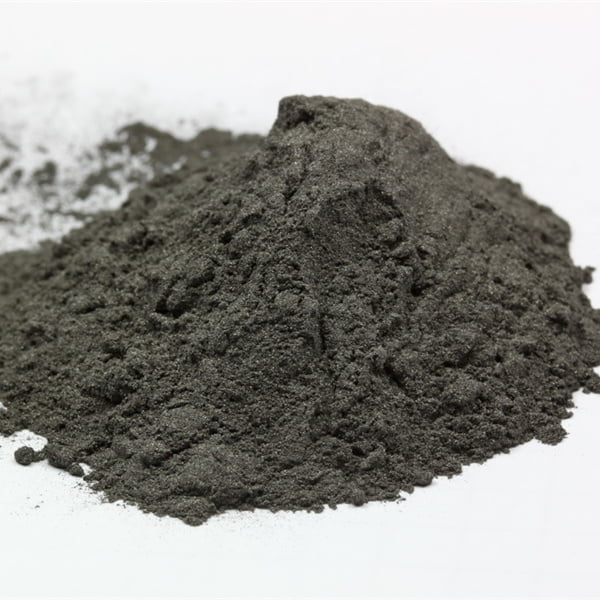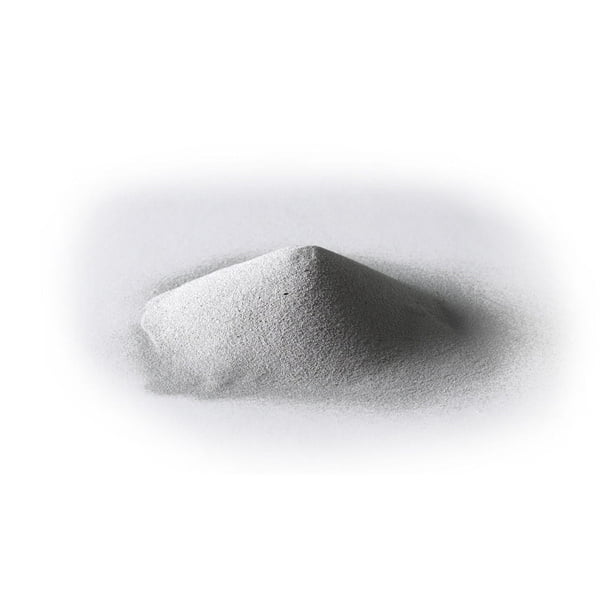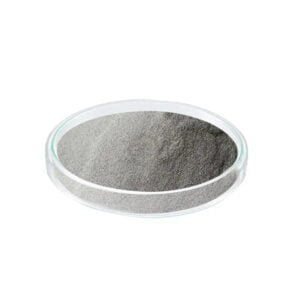Systémy atomizace kovů
Obsah
Atomizace kovů je výrobní proces, při kterém se kov mění na prášek rozbitím roztaveného kovu na malé kapičky. Tento prášek pak lze použít k výrobě dílů metodami, jako je vstřikování kovů, izostatické lisování za tepla, aditivní výroba a další. Rozprašovací systémy kovů jsou zařízení používaná k provádění tohoto procesu.
Přehled systémů atomizace kovů
Systémy atomizace kovů se skládají z mechanismů, které roztaví kovovou surovinu, dopraví roztavený kov do atomizačního prostoru, rozbijí kov na jemné kapičky a shromáždí ztuhlý prášek. Mezi klíčové součásti patří pece, tundry, dodávací mechanismy, atomizátory, chladicí komory, cyklonové odlučovače, vakové filtry a systémy pro sběr prášku.
Existují dva hlavní typy rozprašovacích systémů:
- Plynová atomizace - k rozbití proudu roztaveného kovu se používá vysokotlaký plyn.
- Rozprašování vodou - k rozbití roztaveného kovu se používá voda pod vysokým tlakem.
Plynová atomizace produkuje v průměru jemnější prášky, zatímco vodní atomizace nabízí vyšší výrobní rychlost. Obě metody mohou dosáhnout poměrně vysokých výtěžků v závislosti na konstrukci a provozních parametrech.
systémy atomizace kovů Složení
| Komponent | Popis |
|---|---|
| Pec | Tavení kovového materiálu do kapalného stavu indukcí, spalováním atd. Běžnými typy jsou indukční pece a elektrické obloukové pece. |
| Tundish | Slouží jako zásobník, ve kterém se udržuje roztavený kov po opuštění pece. Zajišťuje nepřetržitý tok kovu do dodávkového systému. |
| Systém dodávek | Přenáší roztavený kov z misky do rozprašovače. Často se používá nalévací trychtýř, vyhřívaná pračka nebo tlaková tryska. |
| Rozprašovač | Rozbíjí roztavený kov na kapky pomocí plynových nebo vodních trysek. Různá provedení a počet trysek. |
| Chladicí část | Umožňuje ztuhnutí prášku po atomizaci před sběrem. Jako chladicí médium se používá vzduch nebo inertní plyn. |
| Oddělovací systém | Zachycuje jemné částice prášku a zároveň umožňuje recirkulaci chladicího média. Používá cyklony, sáčkové filtry. |
| Sbírka prášku | Sbírá rozprašovaný prášek k vyzvednutí. Často bubnové nebo krabicové kontejnery, boxy na rukavice nebo dopravníkové pásy vedoucí ke kontejnerům. |

systémy atomizace kovů Typy
Při komerční výrobě kovového prášku se používá několik běžných konstrukcí rozprašovačů:
Rozprašovače plynu
- Nadzvukový rozprašovač plynu - trysky Laval urychlují inertní plyn až na sonickou rychlost.
- Rozprašovač plynu s těsnou vazbou - více plynových trysek dopadajících na proud roztaveného kovu.
- Atomizátor plynu s volným pádem - proud roztaveného kovu volně padá vysokou rychlostí inertního plynu.
Rozprašovače vody
- Tlakový vodní rozprašovač - vysokotlaké vodní paprsky dopadají na proud roztaveného kovu.
- Rotační vodní rozprašovač - proud roztaveného kovu se dotýká rotujících vodních trysek.
- Ponorný vodní rozprašovač - vodní trysky umístěné pod povrchem proudu roztaveného kovu.
Vlastnosti kovového rozprašovače
| Atribut | Popis |
|---|---|
| Typ plynu | Inertní plyny jako dusík, argon se používají k zabránění oxidace. Dusík je nejúspornější. |
| Tlak vody | Tlak 30-150 MPa potřebný ke správné atomizaci kovů. |
| Počet trysek | Větší počet trysek zvyšuje rozpad kovu, ale může snížit výtěžnost. Běžně se používá kolem 4-8. |
| Uspořádání trysek | Kulaté nebo obdélníkové tryskové vzory pokrývající kovový proud. Obdélníkový rovnoměrnější prášek. |
| Rychlost proudu | Díky vyšším rychlostem inertního plynu jsou prášky jemnější. Optimální rychlost plynu se liší pro každý kov. |
| Výška pádu | Výška proudu roztaveného kovu padá před nárazem do trysek. Ovlivňuje distribuci velikosti částic. |
| Konstrukce toku | Upřednostňuje se hladké, laminární proudění kovu, aby se zabránilo brzkému rozstřiku na kapky. |
| Konstrukce trysek | Přesně opracované trysky v plynových rozprašovačích mají zásadní význam pro výkon. |
| Rychlost chlazení | Rychlejším chlazením vzniká jemnější prášek. Záleží na teplotě plynu/vody a komoře. |
| Účinnost separace | Vyšší míra separace zvyšuje výtěžnost. Dobře fungují samočinné cyklony. |
| Způsob sběru | Uzavřené systémy zabraňují oxidaci prášku. Automatické bubnové dopravníky jsou běžné. |
Charakteristika kovového prášku
Vlastnosti vyrobeného kovového prášku do značné míry závisí na parametrech a podmínkách procesu atomizace.
Vlastnosti prášku
| Atribut | Typický rozsah |
|---|---|
| Tvar částic | Nepravidelné, sférické, satelitní struktury |
| Velikost částic | 1 mikron až 1000 mikronů |
| Distribuce velikosti částic | Gaussův, logaritmicko-normální společný |
| Zdánlivá hustota | Obecně 30-80% skutečné hustoty |
| Hustota poklepání | Přibližně 60-95% skutečné hustoty |
| Průtoková rychlost | Velmi se liší podle tvaru a rozdělení velikosti |
| Čistota | 93-99.5% cílový rozsah |
| Obsah kyslíku | Rozsah 300-3000 ppm |
| Obsah dusíku | Rozsah 75-1500 ppm |
Vliv na vlastnosti dílu
| Atribut prášku | Vliv na spékané/tiskované díly |
|---|---|
| Velikost částic | Jemnější prášky zvyšují hustotu, zmenšují póry |
| Rozložení velikosti | Širší rozložení zajišťuje lepší hustotu balení |
| Tvar částic | Sférické částice mají lepší průtok a balení |
| Zdánlivá hustota | Vyšší hustota zvyšuje pevnost zelené barvy při manipulaci |
| Hustota poklepání | Vyšší hustota způsobuje, že po spékání vzniká méně smršťovacích dutin. |
| Čistota | Vyšší čistota snižuje výskyt vad, jako jsou inkluze. |
| Obsah kyslíku | Hodnoty nad 3000 ppm mohou způsobit problémy s pórovitostí. |
systémy atomizace kovů Aplikace
Jemné kovové prášky vyráběné atomizací se používají v mnoha průmyslových odvětvích k výrobě vysoce výkonných dílů.
| Průmysl | Příklady použití |
|---|---|
| Automobilový průmysl | Součásti motoru, převodovky, spojovací materiál |
| Aerospace | Lopatky turbíny, součásti aerodynamického krytu |
| Biomedicína | Ortopedické implantáty, chirurgické nástroje |
| Elektronika | Stínění, konektory, kontakty |
| Energie | Jaderné a turbínové díly vystavené extrémním podmínkám |
| Aditivní výroba | 3D tištěné finální díly ve všech průmyslových odvětvích |
Oblíbené systémy atomizace kovů
Mnoho slitin se pro výrobu dílů rozprašuje do práškové formy. Zde jsou uvedeny některé běžné kovy a slitiny, které se atomizují:
| Materiál | Klíčové vlastnosti |
|---|---|
| Slitiny titanu | Vysoká pevnost při nízké hmotnosti. Biokompatibilita. |
| Slitiny niklu | Zachovává si vlastnosti při vysokých teplotách. Odolnost proti korozi. |
| Kobaltové slitiny | Biokompatibilita. Odolnost proti opotřebení. |
| Nástrojové oceli | Vysoká úroveň tvrdosti po tepelném zpracování. |
| Nerezové oceli | Vynikající odolnost proti korozi. |
| Slitiny hliníku | Nízká hmotnost. Dobrá tepelná vodivost. |
| Slitiny mědi | Vysoká tepelná a elektrická vodivost. |
| Magnetické slitiny | Vysoká permeabilita pro magnetické aplikace. |
Dodavatelé kovových prášků a ceny
Existuje řada renomovaných dodavatelů, kteří vyrábějí a distribuují kovové prášky po celém světě. Ceny závisí na slitině, velikosti částic a objednaném množství.
| Dodavatel | Cenová rozpětí |
|---|---|
| AP&C | $50 - $1500 za kg |
| Sandvik Osprey | $100 - $2000 za kg |
| Tesařské práškové výrobky | $75 - $1800 za kg |
| Technologie povrchů Praxair | $250 - $2500 za kg |
| Höganäs | $45 - $1600 za kg |
| Granule ECKA | $80 - $1200 za kg |
Slitiny s vyšším výkonem nebo jemnější kontrolou distribuce velikosti prášku vyžadují vyšší ceny, zatímco běžnější kovy a slitiny jsou při výrobních objemech ekonomičtější.
Atomizace kovů vs. jiné metody
| Metoda | Výhody | Omezení |
|---|---|---|
| Rozprašování kovů | - Jemnější prášky - Vyšší čistota - Rozsah slitin | - Vysoké kapitálové náklady - Vyžaduje značné odborné znalosti v oblasti zpracování |
| Elektrolytický proces | - Velmi jemné a čisté prášky | - Omezeno na vodivé slitiny - Drahé |
| Mechanický úbytek | - Jednoduché a levné - Široká škála kovů | - Nižší dosažitelná jemnost - Vyšší oxidace |
| Chemické srážení | - Čisté elementární a legované prášky | - Problémy s aglomerací prášku - Potenciální kontaminace |
| Tepelné stříkání | - Může vyrábět sférický prášek | - Oxidové inkluze - široké rozdělení velikostí |
Atomizace nabízí přiměřeně jemné a čisté prášky pro širokou škálu slitin při dobrých výrobních objemech. Při manipulaci s jemnými kovovými prášky je nutné dodržovat bezpečnostní opatření.
Klíčová hlediska pro výběr
Mezi důležité faktory, kterými se řídí výběr systému pro atomizaci kovů, patří:
| Faktor | Popis |
|---|---|
| Rychlost výroby | Požadovaný výkon prášku v kg/hod. Definuje kapacitu. |
| Cílová velikost částic | Potřebuje definovanou jemnost, distribuci. Ovlivňuje výnos, náklady. |
| Složení slitiny | Většina systémů zvládá řadu slitin. Může ovlivnit výběr metody tavení, rozprašovače, tlaku plynu a vody. |
| Kvalita výrobku | Parametry určují úrovně čistoty, limity pro odběr kyslíku a požadavky na konzistenci velikosti. |
| Úvahy o manipulaci | Upřednostňuje se uzavřená manipulace s práškem. Některé kovy představují zdravotní rizika. |
| Konečné použití prášku | Požadavky na vlastnosti dílů - hustota/pórovitost, tekutost, tvarové faktory. |
| Provozní náklady | Komunální vstupy pro tavení, plyny, vodu. Mzdové náklady, náklady na údržbu. |
| Bezpečnost | Tlakové nádoby na kapaliny/plyny vyžadují dodržování zvláštních předpisů. |
| Dopad na životní prostředí | Emise plynů, spotřeba vody/odstraňování odpadů. |
Je nutné pečlivě stanovit požadavky na propustnost, ukazatele kvality, provozní podmínky, bezpečnostní parametry a náklady na základě požadavků na koncové díly.
systémy atomizace kovů Údržba
Aby rozprašovací zařízení fungovalo optimálně, je nutná správná údržba.
| Komponent | Činnosti údržby | Frekvence |
|---|---|---|
| Pec | Zkontrolujte žáruvzdorné a topné prvky. V případě potřeby je vyměňte. | 6-12 měsíců |
| Trysky | Zkontrolujte opotřebení/ucpání trysek. | Měsíční |
| Vodní filtry a vedení | Pravidelně proplachujte potrubí a vyměňujte filtry. | 2-4 týdny |
| Plynová vedení a ventily | Zkontrolujte, zda nedochází k únikům a ucpání. Zkontrolujte tlak. | 2-4 týdny |
| Oddělovače | Zkontrolujte stav filtračního média a těsnění. | 4-6 měsíců |
| Ovládací prvky a senzory | Zkontrolujte kalibraci. Otestujte blokování a reakce. | 6-12 měsíců |
| Sběrač prášku | Zkontrolujte stav nádoby a těsnění. U uzavřených systémů ověřte hladinu inertního plynu. | Měsíční |
| Interiéry systému | Čistý nahromaděný kovový prach v celé ploše. Častěji blíže k cestám kovových proudů. | Měsíční |
Podrobné monitorování zařízení, preventivní a prediktivní údržba minimalizuje neočekávané výpadky ve výrobě.

Nejčastější dotazy
Otázka: Jaká je vhodná úroveň automatizace a řízení pro systémy rozprašování kovů?
Odpověď: Pro konzistentní výrobu prášku a bezpečnost se doporučuje vysoký stupeň automatizace při podávání materiálu, monitorování a řízení procesu. Klíčové proměnné procesu, jako jsou teploty, tlaky a průtoky plynů, by měly mít automatickou zpětnou vazbu. Dohled nad systémem, ladění parametrů a manuální provozní režim je stále rozumný.
Otázka: Jak zjistit, zda je pro aplikaci vhodnější plynová nebo vodní atomizace?
Odpověď: Vodní atomizace nabízí ve srovnání s plynovou atomizací mnohem vyšší průchodnost kovů. Plynová atomizace však může dosáhnout jemnější průměrné velikosti prášku vhodné pro mikrostrukturované díly. Pro typické MIM prášky o velikosti nad 15 mikronů se z důvodu hospodárnosti dává přednost vodní atomizaci.
Otázka: Jaká bezpečnostní opatření se doporučují pro provoz rozprašovacích systémů?
Odpověď: Pro manipulaci s vysokotlakými systémy a jemnými prášky je nutné používat vhodné ochranné prostředky. Vodní rozprašovací systémy by měly být vybaveny ochrannými kryty proti rozstřiku. Uzavřená manipulace s práškem pomocí boxů s rukavicemi s inertním plynem, automatických sběračů prášku zvyšuje bezpečnost. Zásadní jsou výluky, omezení přístupu, nouzové zastavení.
Otázka: Co způsobuje běžné problémy při výrobě prášku při atomizaci?
Odpověď: Nepravidelné velikosti prášku a satelitní částice často vznikají v důsledku nekontrolovaného proudění kovů. Kontaminace může být způsobena opotřebením trysky, znehodnoceným filtračním médiem nebo netěsnostmi. Znečištění komor a separátorů v důsledku přetečení snižuje časem výtěžnost. Klíčové je sledování a optimalizace parametrů toku.
Otázka: Jaké odborné znalosti jsou zapotřebí k efektivní obsluze atomizačních systémů?
Odpověď: Automatizace řízení snižuje manuální zátěž, ale pro dohled nad zařízením jsou ideální vyškolení metalurgové nebo materiáloví inženýři, kteří jsou obeznámeni s výrobou prášků. Pro údržbu a řešení problémů jsou zapotřebí strojní a elektroinženýři. Obsluha by měla absolvovat řádné školení o manipulaci s kovovými prášky.
Sdílet na
MET3DP Technology Co., LTD je předním poskytovatelem řešení aditivní výroby se sídlem v Qingdao v Číně. Naše společnost se specializuje na zařízení pro 3D tisk a vysoce výkonné kovové prášky pro průmyslové aplikace.
Dotaz k získání nejlepší ceny a přizpůsobeného řešení pro vaše podnikání!
Související články

Vysoce výkonné segmenty lopatek trysek: Revoluce v účinnosti turbín díky 3D tisku z kovu
Přečtěte si více "O Met3DP
Nedávná aktualizace
Náš produkt
KONTAKTUJTE NÁS
Nějaké otázky? Pošlete nám zprávu hned teď! Po obdržení vaší zprávy obsloužíme vaši žádost s celým týmem.

Kovové prášky pro 3D tisk a aditivní výrobu
SPOLEČNOST
PRODUKT
kontaktní informace
- Město Qingdao, Shandong, Čína
- [email protected]
- [email protected]
- +86 19116340731

















